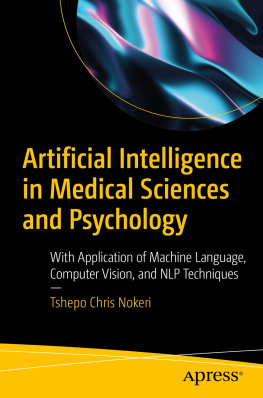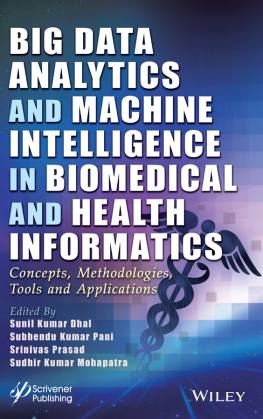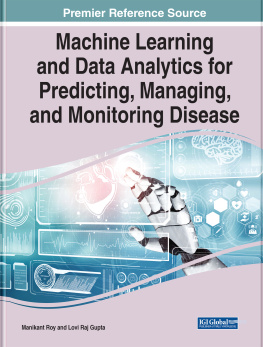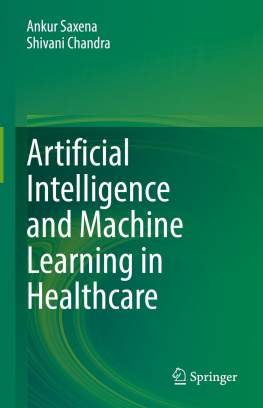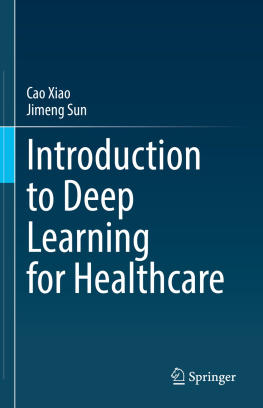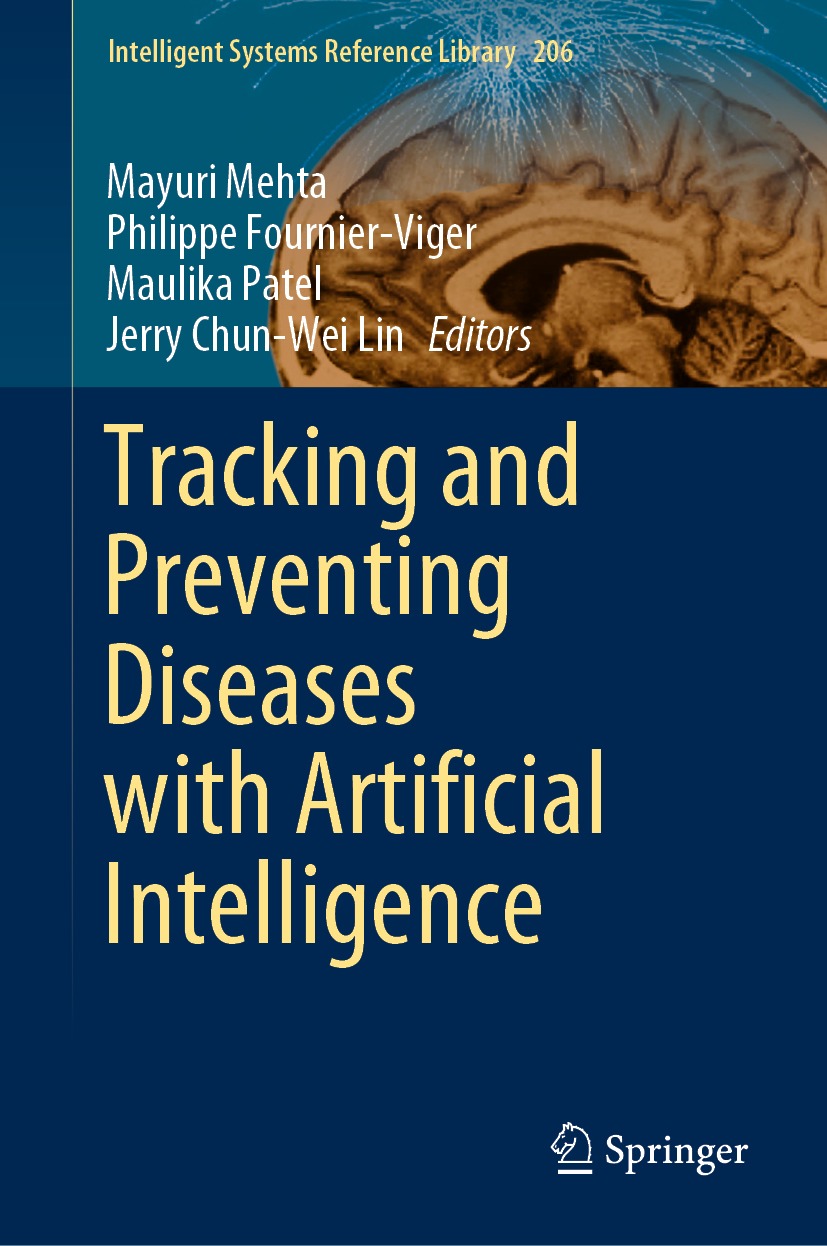Volume 206
Intelligent Systems Reference Library
Series Editors
Janusz Kacprzyk
Polish Academy of Sciences, Warsaw, Poland
Lakhmi C. Jain
KES International, Shoreham-by-Sea, UK
The aim of this series is to publish a Reference Library, including novel advances and developments in all aspects of Intelligent Systems in an easily accessible and well structured form. The series includes reference works, handbooks, compendia, textbooks, well-structured monographs, dictionaries, and encyclopedias. It contains well integrated knowledge and current information in the field of Intelligent Systems. The series covers the theory, applications, and design methods of Intelligent Systems. Virtually all disciplines such as engineering, computer science, avionics, business, e-commerce, environment, healthcare, physics and life science are included. The list of topics spans all the areas of modern intelligent systems such as: Ambient intelligence, Computational intelligence, Social intelligence, Computational neuroscience, Artificial life, Virtual society, Cognitive systems, DNA and immunity-based systems, e-Learning and teaching, Human-centred computing and Machine ethics, Intelligent control, Intelligent data analysis, Knowledge-based paradigms, Knowledge management, Intelligent agents, Intelligent decision making, Intelligent network security, Interactive entertainment, Learning paradigms, Recommender systems, Robotics and Mechatronics including human-machine teaming, Self-organizing and adaptive systems, Soft computing including Neural systems, Fuzzy systems, Evolutionary computing and the Fusion of these paradigms, Perception and Vision, Web intelligence and Multimedia.
Indexed by SCOPUS, DBLP, zbMATH, SCImago.
All books published in the series are submitted for consideration in Web of Science.
More information about this series at http://www.springer.com/series/8578
Editors
Mayuri Mehta , Philippe Fournier-Viger , Maulika Patel and Jerry Chun-Wei Lin
Tracking and Preventing Diseases with Artificial Intelligence
1st ed. 2022

Logo of the publisher
Editors
Mayuri Mehta
Department of Computer Engineering, Sarvajanik College of Engineering and Technology, Surat, Gujarat, India
Philippe Fournier-Viger
School of Humanities and Social Sciences, Harbin Institute of Technology (Shenzhen), Shenzhen, Guangdong, China
Maulika Patel
Department of Computer Engineering, G. H. Patel College of Engineering and Technology, Charutar Vidya Mandal University, Vallabh Vidyanagar, Gujarat, India
Jerry Chun-Wei Lin
Department of Computer Science, Electrical Engineering and Mathematical Sciences, Western Norway University of Applied Sciences, Bergen, Norway
ISSN 1868-4394 e-ISSN 1868-4408
Intelligent Systems Reference Library
ISBN 978-3-030-76731-0 e-ISBN 978-3-030-76732-7
https://doi.org/10.1007/978-3-030-76732-7
The Editor(s) (if applicable) and The Author(s), under exclusive license to Springer Nature Switzerland AG 2022
This work is subject to copyright. All rights are solely and exclusively licensed by the Publisher, whether the whole or part of the material is concerned, specifically the rights of translation, reprinting, reuse of illustrations, recitation, broadcasting, reproduction on microfilms or in any other physical way, and transmission or information storage and retrieval, electronic adaptation, computer software, or by similar or dissimilar methodology now known or hereafter developed.
The use of general descriptive names, registered names, trademarks, service marks, etc. in this publication does not imply, even in the absence of a specific statement, that such names are exempt from the relevant protective laws and regulations and therefore free for general use.
The publisher, the authors and the editors are safe to assume that the advice and information in this book are believed to be true and accurate at the date of publication. Neither the publisher nor the authors or the editors give a warranty, expressed or implied, with respect to the material contained herein or for any errors or omissions that may have been made. The publisher remains neutral with regard to jurisdictional claims in published maps and institutional affiliations.
This Springer imprint is published by the registered company Springer Nature Switzerland AG
The registered company address is: Gewerbestrasse 11, 6330 Cham, Switzerland
Preface
All around the world, the spread of infectious diseases is a major concern as it directly impacts the health of people. While some infectious diseases may have a minor impact on society, some can have major impacts such as the recent SARS-CoV-2 coronavirus pandemic, also known as COVID-19.
To cope with the spread of infectious diseases, some traditional approaches are used such as to study the effect of medicines and develop new ones, design appropriate vaccines, and enforce various measures such as washing hands, wearing face masks, and doing temperature checks. However, despite the usage of such measures and medical advancements, there remain several incurable diseases for which prevention is the only cure. Besides, time is often critical when coping with new diseases that are highly contagious such as COVID-19 as no vaccine or very effective medicine is initially available.
To cope with these challenges, artificial intelligence (AI) has been rapidly adopted to assist physicians in diagnosis, disease tracking, prevention, and control. Due to increasing the availability of electronic healthcare data and rapid progress of analytics techniques, a lot of research is being carried out in this area by applying machine learning and data mining techniques to assist the medical professionals for making a preliminary evaluation.
This book is a collection of 11 chapters that provides a timely overview of recent advances in this area, that is, to use artificial intelligence techniques for tracking and preventing diseases. The target audience of this book is researchers, practitioners, and students. A brief description of each chapter is given below.
In Chap. , four approaches to identify stress by recognizing the emotional state of a person have been proposed. Pradeep et al. have analyzed the performance of the proposed approaches using Surrey Audio-Visual Expressed Emotion (SAVEE) and ENTERFACE databases. The results illustrate the considerable reduction in computational time and show that vector quantization-based features perform better than mel-frequency cepstral coefficients feature.
In Chap. , Fayemiwo et al. compared various approaches for the detection of COVID-19 from X-ray images. The problem is viewed as a classification problem with two classes (normal vs COVID-19) or three classes (normal, pneumonia, and COVID-19). A fine-tuned VGG-19 convolutional neural network with deep transfer learning shows that high accuracy can be obtained (from 89% to 99% depending on the scenario.
In Chap. , Falguni et al. aim to develop an intelligent diagnostic system for glaucomaan eye-related disease, from the data obtained through clinicians by various examination devices or equipment used in ophthalmology. The classification is done by using a hybrid approach using artificial neural network, Nave Bayes algorithms, decision tree algorithms, and 18 medical examination parameters for a patient. FGLAUC-99 is developed with J48, Nave Bayes, and MLP classifiers with accuracy of 99.18%. The accuracy is not compared with other classifiers as the dataset is exclusively developed.



